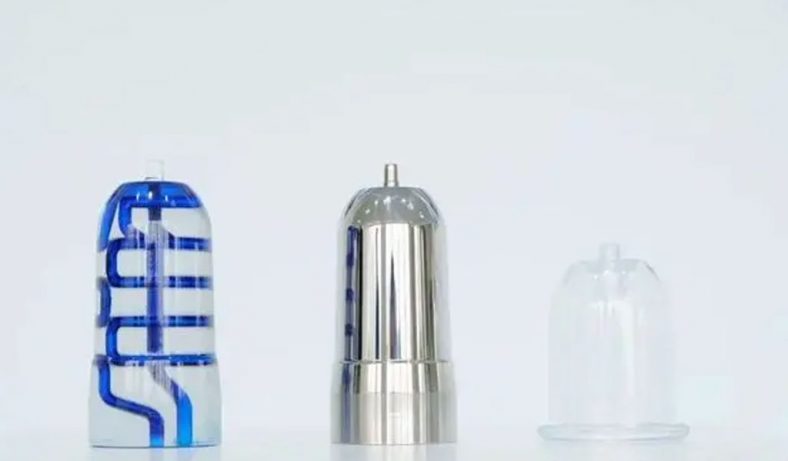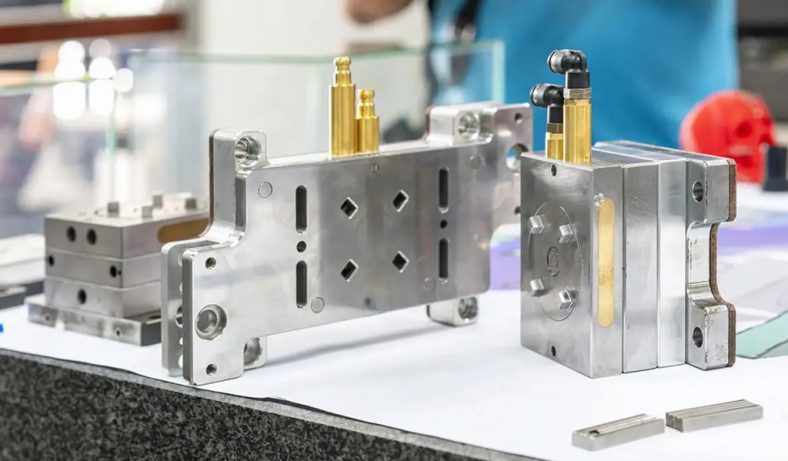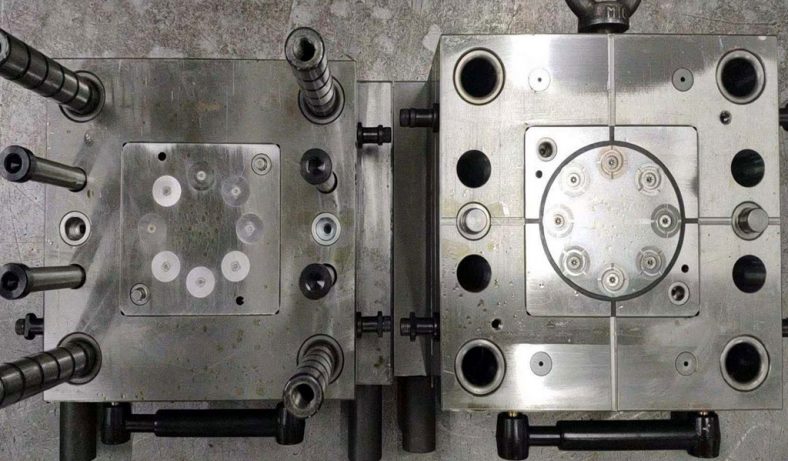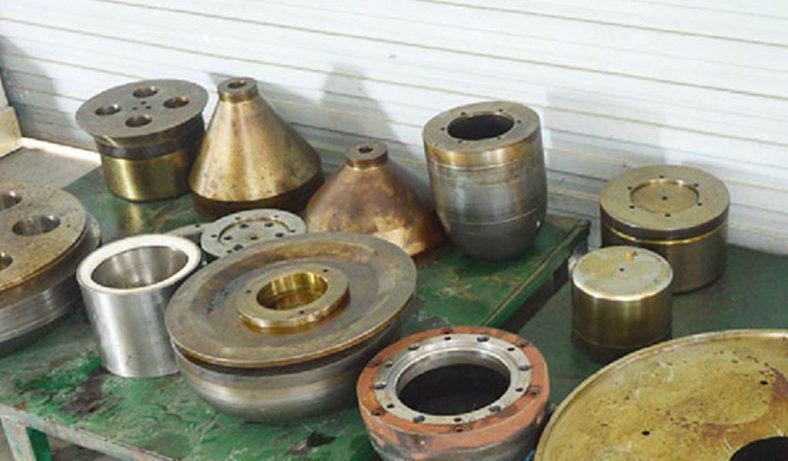
Injection molding is one of the most widely used manufacturing processes for producing high-quality plastic parts with complex geometries. The process involves injecting molten plastic material into a mold cavity, where it cools and solidifies to form the desired part. However, the process is not without challenges, one of which is the presence of ejector pin marks on the surface of the molded parts.Ejector pin marks, also known as ejector marks or push marks, are surface imperfections that occur when the molded part is ejected from the mold. These marks are typically small, circular depressions or raised areas on the surface of the part, corresponding to the location of the ejector pins in the mold.
While ejector pin marks may be inconspicuous in some applications, they can be highly undesirable in others, particularly in parts where aesthetics or surface finish is critical.
In this article, we will explore the various factors that contribute to the formation of ejector pin marks in injection-molded parts and provide detailed guidance on how to minimize or eliminate these defects. We will cover topics ranging from mold design and material selection to processing parameters and advanced technologies, offering a comprehensive overview of best practices in the industry.
Understanding Ejector Pin Marks
Ejector pin marks are surface imperfections that manifest as small indentations or protrusions on the surface of an injection-molded part. These marks are directly related to the action of the ejector pins, which are used to push the part out of the mold after it has cooled and solidified. The severity and visibility of ejector pin marks can vary depending on several factors, including the material being molded, the design of the mold, and the processing conditions.
Definition and Visual Characteristics
Ejector pin marks typically appear as small, circular features on the surface of the part, corresponding to the size and shape of the ejector pins. These marks can be either recessed or raised, depending on the interaction between the ejector pins and the molded part. In some cases, ejector pin marks may also manifest as slight discoloration or surface texture changes, further affecting the overall appearance of the part.
Common Causes
Several factors can contribute to the formation of ejector pin marks during the injection molding process. Understanding these causes is essential for identifying and implementing effective solutions.
Mechanical Factors
- Ejector Pin Force: Excessive force applied by the ejector pins can cause the pins to dig into the surface of the part, leaving visible marks. Conversely, insufficient force may result in incomplete ejection, leading to defects.
- Pin Misalignment: Misaligned ejector pins can create uneven pressure distribution during ejection, leading to localized surface imperfections.
Thermal Factors
- Cooling Time and Temperature: Uneven cooling of the part can cause differential shrinkage, leading to the formation of ejector pin marks. This is particularly problematic in parts with complex geometries or varying wall thicknesses.
- Mold Temperature: Inadequate mold temperature control can result in inconsistent solidification of the plastic material, increasing the likelihood of ejector pin marks.
Material-Related Factors
- Material Shrinkage: Certain materials exhibit higher shrinkage rates during cooling, which can exacerbate the formation of ejector pin marks. For example, crystalline polymers tend to shrink more than amorphous polymers, making them more prone to these defects.
- Material Flow Characteristics: Poor flow characteristics can lead to incomplete filling of the mold cavity, resulting in areas of weakness where ejector pin marks are more likely to occur.
Design Considerations to Minimize Ejector Pin Marks
One of the most effective ways to reduce or eliminate ejector pin marks is through careful mold and part design. By optimizing the design of the mold and the placement of ejector pins, manufacturers can significantly reduce the risk of these surface imperfections.
Ejector Pin Placement
Strategically placing ejector pins in less visible or less critical areas of the part can help minimize the visual impact of ejector pin marks. For example, placing pins on the interior surfaces or in areas that will be hidden in the final assembly can reduce the likelihood of the marks being noticed.
Ejector Pin Size and Shape
The size and shape of ejector pins can also influence the appearance of ejector pin marks. Using larger pins can distribute the ejection force more evenly, reducing the likelihood of visible marks. Additionally, using ejector pins with a flat or domed tip can help minimize surface deformation during ejection.
Mold Design Optimization
- Parting Line Considerations: Designing the mold with the parting line in mind can help minimize the impact of ejector pin marks. For example, placing the parting line along a less critical surface can reduce the visibility of any marks that do occur.
- Draft Angles: Incorporating appropriate draft angles in the part design can facilitate smoother ejection, reducing the force required and minimizing the risk of ejector pin marks.
Surface Texture and Finish
Applying a suitable surface texture or finish to the mold can help camouflage ejector pin marks. For example, a matte or textured finish can make minor surface imperfections less noticeable compared to a glossy finish.
Use of Ejector Sleeves
In some cases, ejector sleeves can be used in place of traditional ejector pins. Ejector sleeves distribute the ejection force over a larger area, reducing the likelihood of localized surface deformation.
Material Selection
The choice of material for the injection-molded part plays a crucial role in determining the likelihood and severity of ejector pin marks. Different materials exhibit different properties, such as shrinkage, flow characteristics, and cooling behavior, all of which can influence the formation of ejector pin marks.
Material Properties Affecting Ejector Pin Marks
- Shrinkage: Materials with higher shrinkage rates are more prone to ejector pin marks due to differential cooling and the resulting internal stresses.
- Flow Characteristics: Materials with poor flow characteristics may not fill the mold cavity completely, leading to areas of weakness where ejector pin marks are more likely to form.
- Cooling Behavior: The rate at which a material cools and solidifies can also impact the formation of ejector pin marks. Materials that cool unevenly are more likely to exhibit these defects.
Best Practices for Material Selection
When selecting a material for an injection-molded part, it is important to consider its susceptibility to ejector pin marks. Materials with low shrinkage, good flow characteristics, and uniform cooling behavior are generally preferable. Additionally, selecting materials with a suitable surface finish can help minimize the visibility of any marks that do occur.
Processing Parameters and Their Impact
In addition to mold design and material selection, the processing parameters used during injection molding can have a significant impact on the formation of ejector pin marks. By optimizing these parameters, manufacturers can reduce the likelihood of surface defects and improve the overall quality of the molded parts.
Injection Speed and Pressure
The speed and pressure at which the molten material is injected into the mold can affect the final part quality. High injection speed and pressure can lead to increased internal stresses, which may contribute to the formation of ejector pin marks. Conversely, low injection speed and pressure may result in incomplete filling of the mold, leading to defects.
Cooling Time and Temperature
Proper cooling is essential to ensuring that the part solidifies uniformly and is ejected without damage. Insufficient cooling time can lead to premature ejection, resulting in deformation and ejector pin marks. Conversely, excessive cooling time can increase cycle time and reduce production efficiency.
Ejection Speed and Force
The speed and force with which the part is ejected from the mold can also influence the formation of ejector pin marks. Ejecting the part too quickly or with too much force can cause surface deformation, while ejecting too slowly may result in incomplete ejection.
Mold Temperature Control
Maintaining consistent mold temperature is critical to ensuring uniform cooling and solidification of the part. Inconsistent mold temperature can lead to differential shrinkage and increased likelihood of ejector pin marks.
Optimizing Processing Conditions
By carefully monitoring and adjusting processing parameters such as injection speed, pressure, cooling time, and mold temperature, manufacturers can reduce the risk of ejector pin marks and improve the overall quality of the molded parts.
Advanced Techniques and Technologies
In addition to traditional mold design and processing techniques, several advanced technologies can be employed to minimize or eliminate ejector pin marks in injection-molded parts. These technologies include mold surface treatments, vacuum ejection, gas-assisted ejection systems, CNC machining for precision ejector pins, and sensor integration for real-time monitoring.
Mold Surface Coatings and Treatments
Applying specialized coatings or surface treatments to the mold can help reduce friction and wear, leading to smoother ejection and fewer ejector pin marks. For example, coatings such as diamond-like carbon (DLC) or nitride treatments can improve the durability and performance of the mold, reducing the likelihood of surface defects.
Use of Vacuum Ejection
Vacuum ejection systems can be used to assist in the ejection of parts from the mold, reducing the reliance on ejector pins and minimizing the risk of ejector pin marks. These systems create a vacuum between the part and the mold surface, allowing the part to be gently and evenly removed without the need for excessive force.
Gas-Assisted Ejection Systems
Gas-assisted ejection systems use pressurized gas to assist in the ejection of the part from the mold. By applying a uniform force over the entire surface of the part, these systems can reduce the likelihood of localized surface deformation and ejector pin marks.
CNC Machining for Precision Ejector Pins
Precision CNC machining can be used to create ejector pins with exacting tolerances and surface finishes. By ensuring that the ejector pins are perfectly aligned and have a smooth surface, manufacturers can reduce the risk of surface imperfections during ejection.
Sensor Integration and Real-Time Monitoring
Integrating sensors into the injection molding process can provide real-time data on factors such as temperature, pressure, and ejection force. By monitoring these parameters and making adjustments in real-time, manufacturers can optimize the process and reduce the risk of ejector pin marks.
Troubleshooting Ejector Pin Marks
Despite best efforts, ejector pin marks may still occur in some injection-molded parts. In such cases, it is important to have a systematic approach to troubleshooting and resolving the issue. This section will provide guidance on identifying the root cause of ejector pin marks and implementing effective solutions.
Common Issues and Solutions
- Excessive Ejector Force: If ejector pin marks are caused by excessive force, reducing the ejection force or adjusting the placement and size of the ejector pins may help resolve the issue.
- Uneven Cooling: If uneven cooling is the root cause, optimizing the cooling system or adjusting the mold temperature may help reduce the formation of ejector pin marks.
- Material-Related Issues: If the material being used is prone to ejector pin marks, switching to a material with lower shrinkage or better flow characteristics may help mitigate the problem.
Case Studies and Examples
This section will present real-world case studies and examples from various industries, including automotive, consumer electronics, and medical devices, to illustrate how manufacturers have successfully addressed ejector pin mark issues.
Quality Control and Inspection Methods
Ensuring the quality of injection-molded parts requires rigorous inspection and quality control methods. This section will cover various techniques for detecting and evaluating ejector pin marks, as well as strategies for implementing effective quality control measures.
Visual Inspection Techniques
Visual inspection is often the first line of defense in detecting ejector pin marks. This section will discuss best practices for conducting visual inspections, including the use of magnification and lighting to enhance defect detection.
Non-Destructive Testing (NDT) Methods
In addition to visual inspection, non-destructive testing (NDT) methods such as ultrasonic testing or infrared thermography can be used to detect subsurface defects that may be indicative of ejector pin marks.
Surface Roughness Measurement
Measuring the surface roughness of molded parts can provide quantitative data on the severity of ejector pin marks. This section will discuss various methods for measuring surface roughness, including contact profilometry and optical methods.
Implementing Statistical Process Control (SPC)
Statistical Process Control (SPC) is a powerful tool for monitoring and controlling the injection molding process to ensure consistent quality. This section will provide guidance on implementing SPC for detecting and preventing ejector pin marks.
Future Trends and Innovations
The field of injection molding is constantly evolving, with new materials, technologies, and processes being developed to improve the quality and efficiency of production. This section will explore some of the emerging trends and innovations in the industry, including the use of AI and machine learning for process optimization, the development of new materials with reduced shrinkage, and the adoption of sustainable practices in injection molding.
In conclusion, avoiding ejector pin marks in injection-molded parts requires a holistic approach that encompasses mold design, material selection, processing parameters, and advanced technologies. By following the best practices outlined in this article, manufacturers can reduce the likelihood of ejector pin marks and produce high-quality parts with superior surface finish.
The continued evolution of injection molding technologies and materials will further enhance the ability to minimize ejector pin marks, ensuring that injection-molded parts meet the highest standards of quality and aesthetics.
China Top Mold Parts and Mold Making Company
BE-CU.com is a professional manufacturer of precision mould parts. We have the ability to manufacture all kind of precision mold parts, they are commonly used in precision plastic mold, auto mold, medicine mold, and precision automation machine.Our products including: Mold cavity,inserts,core pin,punches, ejector/sleeves pins, sleeves, leader pins, guide sprue bushings, ejector blades etc.We are fully equipped with CNC machining centers, precise surface grinder, numerical control machine, punch formers and precision centerless grinding machines etc.
BE-CU Precision Parts Co.,Ltd. is established in 1995, is a professional manufacturer of precision mould parts. Our factory, located in the mould town--Chang'an. It is a professional company in research, development and manufacturing of precision mould components,we have over 30 years experience in this field,our advanced precision equipment and scientific quality control ensures customers satisfaction.
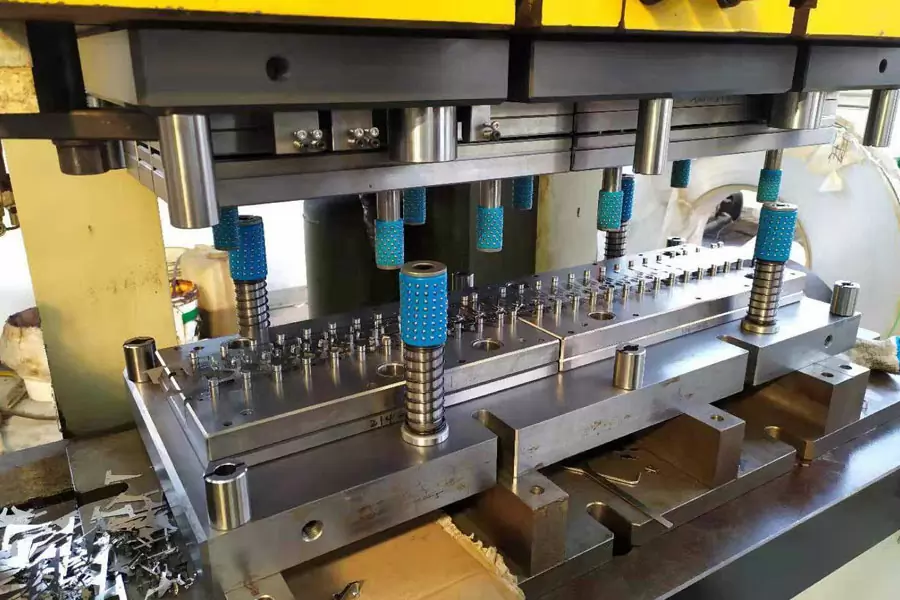
Our complete and advanced mold making facility provides a fundamental advantage as a complete product solution partner. Whether redesigning an existing mold or embarking on a brand new project, our team is able to deliver the highest quality tooling for molding with some of the shortest lead times in the industry.Our tool room is equipped with the latest resources in mold making technology, including CAM, CNC milling, grinding, EDM, inspection and more. These characteristics, coupled with a highly skilled staff encompass our mold-making department.Whatever you need prototype molds for the short-run production, or mass production molds for millions shots, Be-cu.com can handle them for you smoothly.
-

Precision Grinding Tungsten Steel Mold Parts
-

5 Axis CNC Machining Medical Olecranon Plate
-

Special-Shaped Non-Standard Medical Device Needles
-

High-Speed Steel (HSS) Die Punching Needles
-

Precision Tungsten Copper Alloy Eccentric Insert
-

5 Axis CNC Machining Spiral Bevel Gear Mold
-
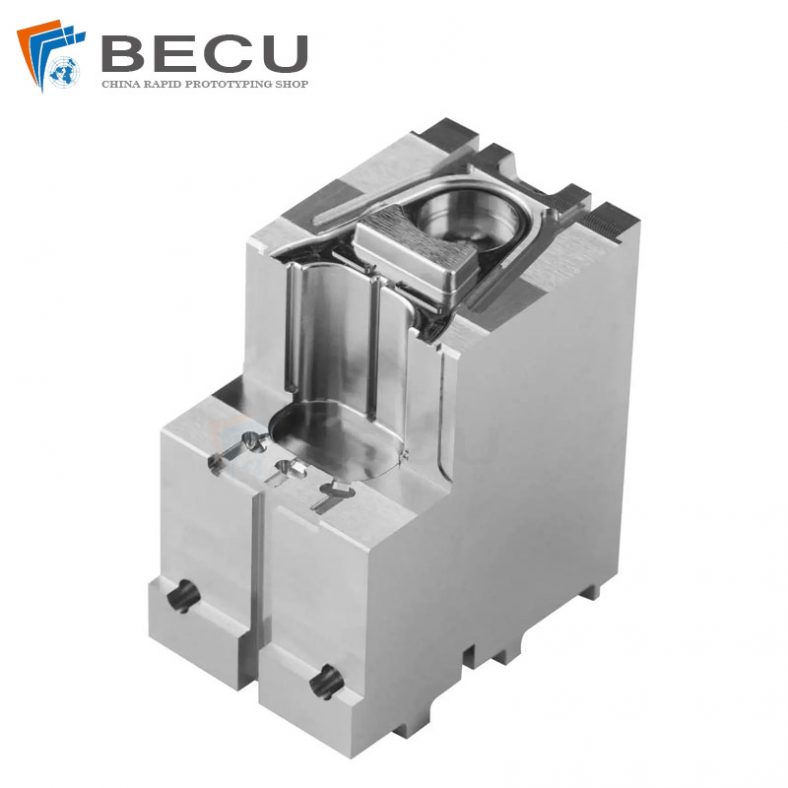
Small Precision Injection Molding Inserts
-
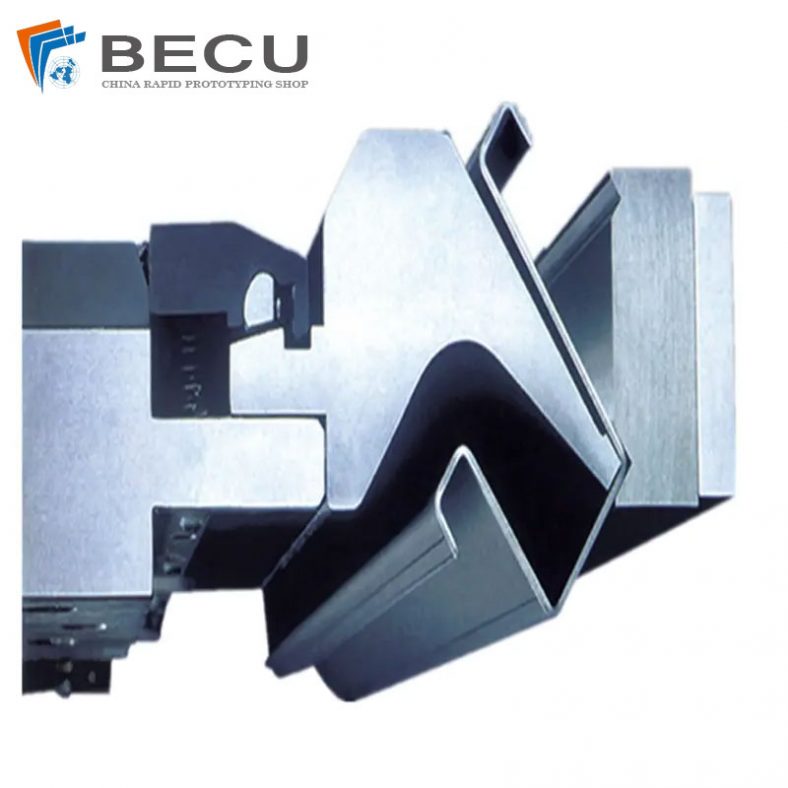
OEM Stainless Steel Press Brake Tooling

